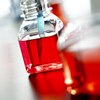CBL198 Sigma-AldrichAnti-Cytokeratin 19 Antibody, clone BA 17
Detect Cytokeratin 19 using this Anti-Cytokeratin 19 Antibody, clone BA 17 validated for use in WB, IC, IH(P).
More>> Detect Cytokeratin 19 using this Anti-Cytokeratin 19 Antibody, clone BA 17 validated for use in WB, IC, IH(P). Less<<Recommended Products
Overview
| Replacement Information |
|---|
Key Specifications Table
| Species Reactivity | Key Applications | Host | Format | Antibody Type |
|---|---|---|---|---|
| H | WB, ICC, IH(P) | M | Purified | Monoclonal Antibody |
| Description | |
|---|---|
| Catalogue Number | CBL198 |
| Replaces | CBL178 |
| Brand Family | Chemicon® |
| Trade Name |
|
| Description | Anti-Cytokeratin 19 Antibody, clone BA 17 |
| References |
|---|
| Product Information | |
|---|---|
| Format | Purified |
| Presentation | The monoclonal is presented at a concentration of 0.1mg/1ml in phosphate buffered saline containing 10mM sodium azide and 1% bovine serum albumin. We recommend that each laboratory determine an optimum working titre for use in its particular application. |
| Quality Level | MQ100 |
| Physicochemical Information |
|---|
| Dimensions |
|---|
| Materials Information |
|---|
| Toxicological Information |
|---|
| Safety Information according to GHS |
|---|
| Safety Information |
|---|
| Storage and Shipping Information | |
|---|---|
| Storage Conditions | For use within 1 month of purchase store at +4°C, for long term storage aliquot antibody into small volumes and store at -20°C. |
| Packaging Information | |
|---|---|
| Material Size | 100 µg |
| Transport Information |
|---|
| Supplemental Information |
|---|
| Specifications |
|---|
| Global Trade Item Number | |
|---|---|
| Catalog Number | GTIN |
| CBL198 | 04053252362354 |
Documentation
Anti-Cytokeratin 19 Antibody, clone BA 17 SDS
| Title |
|---|
Anti-Cytokeratin 19 Antibody, clone BA 17 Certificates of Analysis
References
| Reference overview | Pub Med ID |
|---|---|
| Patterns of expression of keratin 19 as detected with monoclonal antibodies in human breast tissues and tumours. Bartek, J, et al. Int. J. Cancer, 36: 299-306 (1985) 1985 | 2411673
 |
Data Sheet
| Title |
|---|
| Anti-Cytokeratin 19, clone BA 17 - Data Sheet |
















